KATHMANDU: The United States is a Pacific nation, and therefore its foreign policy is heavily dependent on its relationships in the region. Washington’s ties to the Indo-Pacific were fostered through long-standing historical and cultural connections to the countries in the region.
America’s future is tied to the stability, prosperity, and freedom of the Indo-Pacific. The United States has contributed greatly to the advancement of the security, socioeconomic, and political development of the region.
In this connection, Khabarhub interviewed Dr. Ernest Gunasekara-Rockwell, US Expert on International Affairs, and Editor of Journal of Indo-Pacific Affairs and Journal of European, Middle Eastern, & African Affairs at the Air University Press, about the Indo-Pacific and vision for a free and open strategy that is aimed at strengthening the freedom, openness, and security in the region.
In the interview, he says Washington will continue to work with its partners and allies to promote a free and open Indo-Pacific (FOIP) and to pursue mutually beneficial relationships with the other nations therein. The US’ defense commitments will continue to focus on ensuring the rule of law and international cooperation, so that all nations may prosper and develop freely, with peace and security for all.
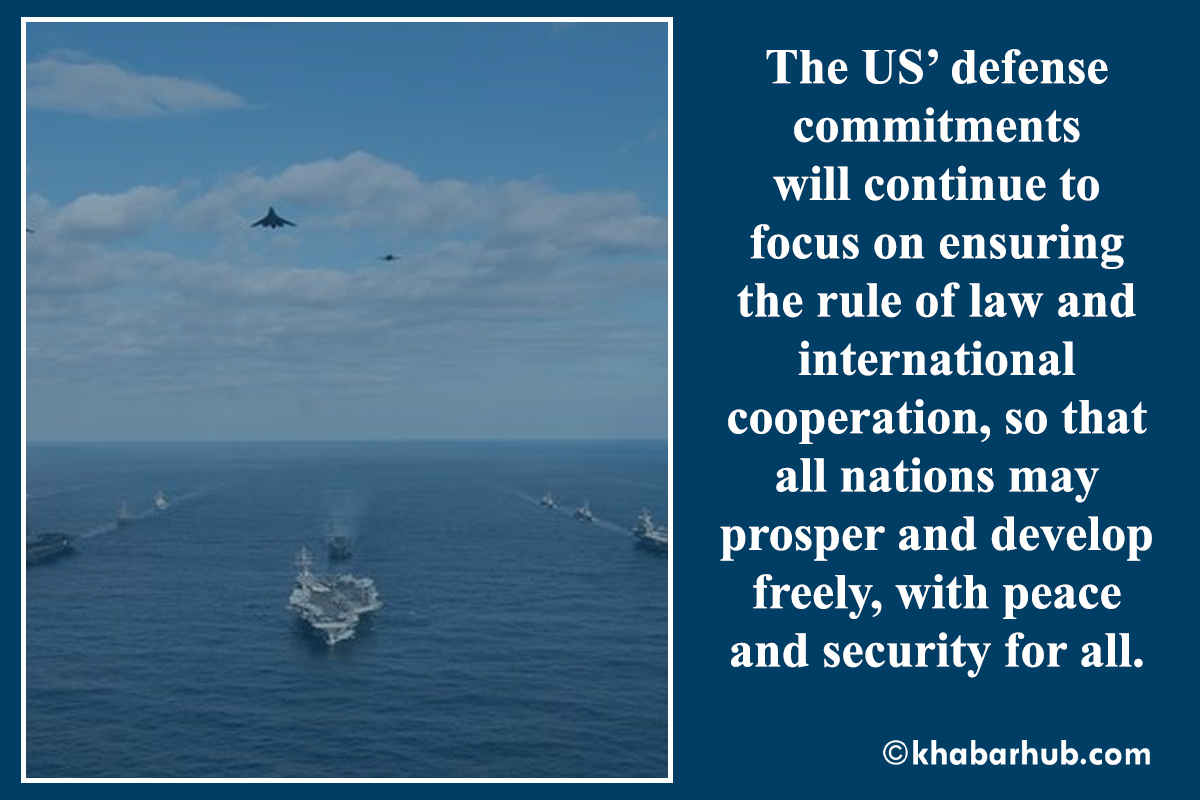
According to him, in the aftermath of World War II, the United States worked tirelessly to build relationships with Japan and South Korea, assisting both nations to rebuild their economies and infrastructures following devastating conflicts that left the countries in tatters — much as America did for Europe through the Marshall Plan. Excerpts:
Disclaimer: Views expressed in the interview are his own and do not necessarily represent the views of the US government.
How does the Indo-Pacific vision for a free and open strategy strengthen the freedom, openness, and security in the region?
To elaborate on the essential ideas and core principles of the US Indo-Pacific Strategy, the concept is based on the premise that a strong American presence in the Indo-Pacific is essential to maintaining peace and security in the region.
Washington should not shy away from using America’s influence and power to promote economic and diplomatic ties with key stakeholders in the region but must also take action to protect America’s vital interests and values, to safeguard regional peace and security, and to provide a viable alternative to China’s Belt and Road Initiative (BRI).
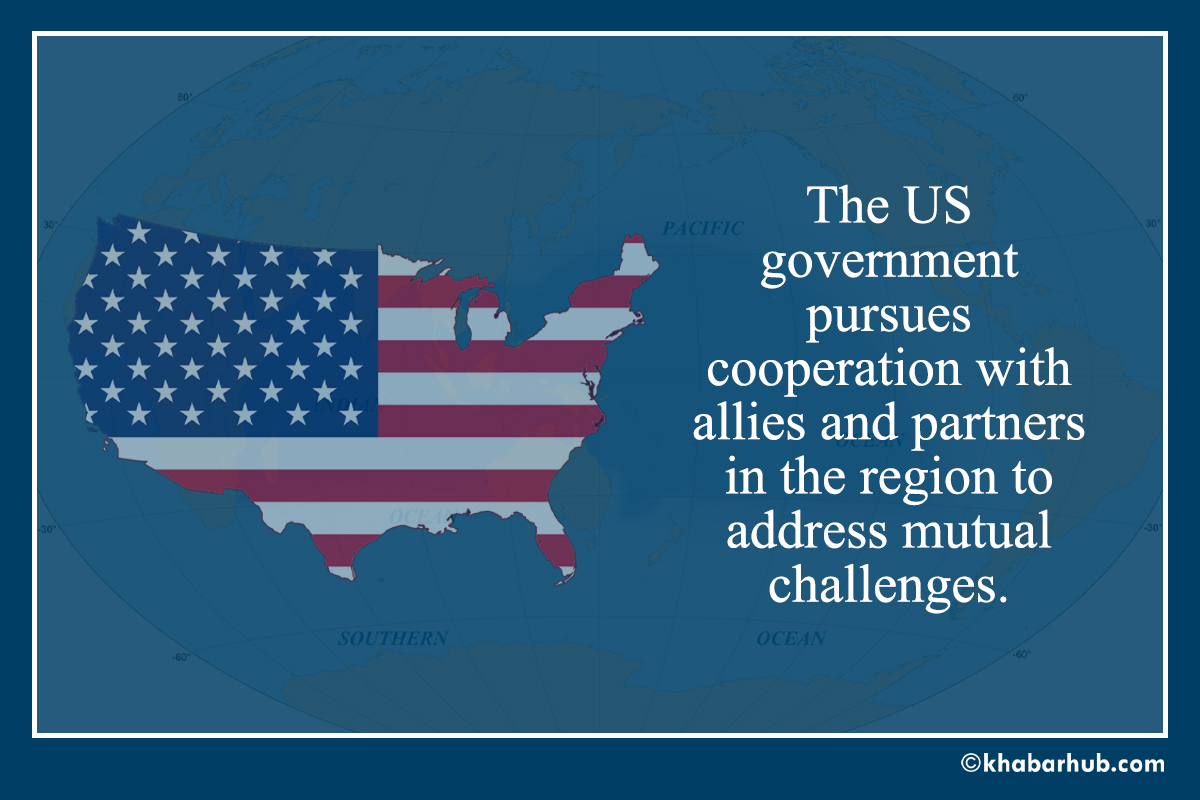
This vision comes from common principles that underpin the current international order, which has benefited all countries in the region—principles all nations in the region have a shared responsibility to support: “(1) respect for sovereignty and independence of all nations; (2) peaceful resolution of disputes; (3) free, fair, and reciprocal trade based on open investment, transparent agreements, and connectivity; and (4) adherence to international rules and norms, including those of freedom of navigation and overflight.”
Washington’s strategy for a free and open Indo-Pacific fosters sustainable growth and connectivity in the region, seeking to ensure that all nations enjoy access to international waters, infrastructure, cyberspace, and markets and are able to pursue peaceable resolution of territorial disputes.
From a socioeconomic perspective, this encourages fair and reciprocal trade, open investment environments, egalitarianism, and transparent agreements among nations, international corporations, regional organizations, and other stakeholders.
This strategy recognizes the intricate interconnectedness among economics, societies, governance, and security that are part of the competitive landscape throughout the region and that economic security is national security.
Recognizing the region’s need for greater investment (not to be confused with debt-trap loans), including the funding of infrastructure projects, the United States aims to forge closer relationships with institutions and governments in the region to foster responsive cooperation on development and funding for regional projects.
The US government will work with allies and partners to provide holistic solutions that result in tangible outcomes and transfer subject matter expertise.
Among the many initiatives aimed at such collaboration are the Indo-Pacific Business Forum, the US International Development Finance Corporation, the US–ASEAN Smart Cities Partnership, the Indo-Pacific Transparency Initiative, and the still-evolving Blue Dot Network.
What do you think are the major opportunities and challenges of the Indo-Pacific Region?
The Indo-Pacific region is beset by numerous transnational security challenges, ranging from terrorism; illicit arms; drug, human, and wildlife trafficking; and piracy, to dangerous pathogens (including the ongoing COVID-19 crisis), weapons proliferation (including conventional and nuclear), and natural disasters.
Additionally, many nations of the region are straddled with weak and illiberal governance.

Additionally, despite having benefited more from the free and open regional and international system than any other nation; China actively undermines the international system, exploiting the system’s benefits while concurrently eating away at the ideals and values of the rules-based order.
Beijing’s mistreatment of Uighurs, Kazakhs, and other Muslims in Xinjiang and the Tibetans illustrates China’s deep-rooted ethnocentrism.
This has been further exemplified by the recent rash of discriminatory actions against African immigrants living in China, highlighted by forced quarantines, evictions, prejudiced employment practices, and refusal of services—particularly in Guangzhou.
Additionally, China has willfully and openly engaged in global campaigns of cyber theft and intellectual property theft. While this has been going on for decades, such theft has intensified in the face of the current COVID-19 pandemic.
In May, the FBI and the Department of Homeland Security warned that hackers tied to the Chinese government are attempting to steal US research related to coronavirus vaccines, treatments, and testing. Such practices run counter to the values and principles of a free and open Indo-Pacific.

Moreover, Beijing continues to militarize the South China Sea. In addition to occupying islands deemed by international courts to not be Chinese territory, the Chinese military has undertaken increasingly aggressive actions in the Indo-Pacific.
The People’s Liberation Army Navy (PLAN) has placed anti-ship cruise missiles and long-range surface-to-air missiles on the disputed Spratly Islands.
PLAN vessels patrol in the East China Sea near the Japan-administered Senkaku Islands with maritime law enforcement ships and aircraft. The People’s Liberation Army Air Force has increased its patrols around and near Taiwan—using bomber, fighter, and surveillance aircraft to intimidate the island.
Additionally, China has continued to develop a wide array of anti-access/area denial (A2/AD) capabilities and key weapon systems, including cruise and ballistic missile systems, modern fighter and bomber aircraft, aircraft carriers, modern ships and submarines, hit-to-kill anti-satellite missiles, autonomous systems, and more.
Furthermore, China continues to use economic inducements and penalties, influence operations, disinformation campaigns, and implied military threats to coerce other nations, both within and outside the Indo-Pacific, to comply with Beijing’s agenda.
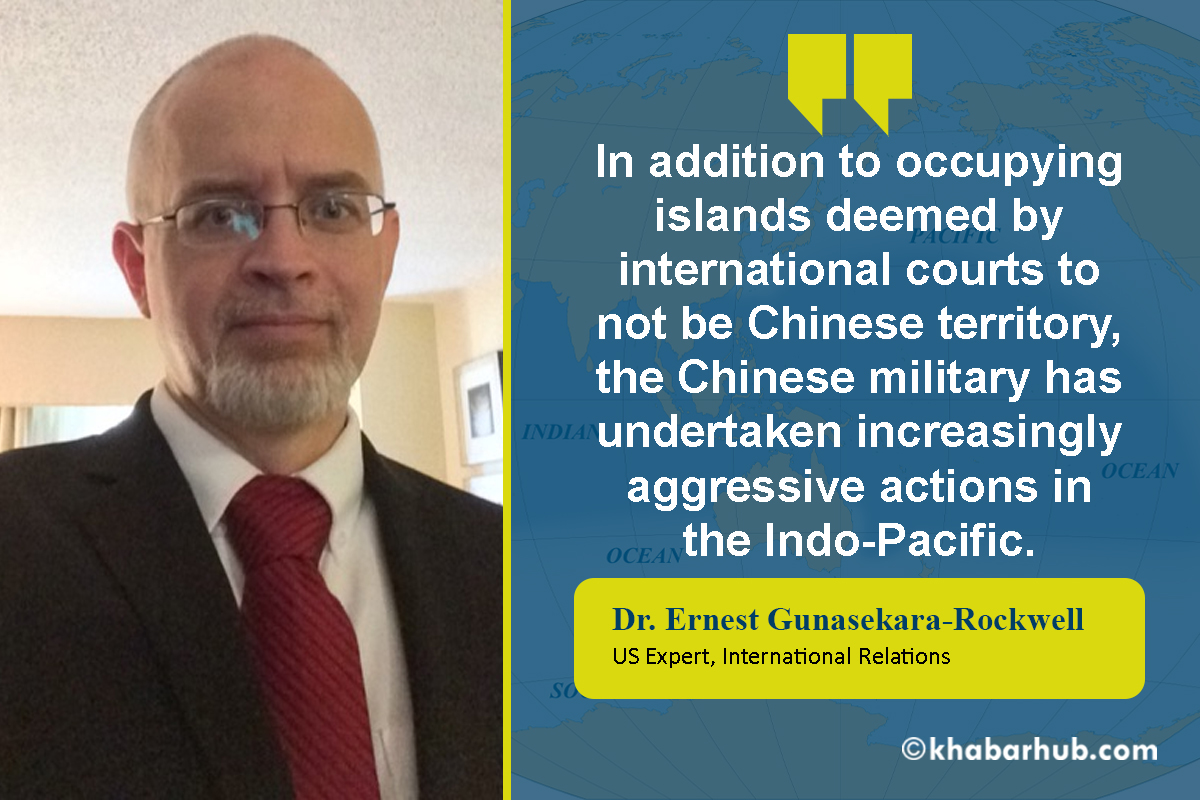
China’s investments often result in negative economic impacts or costs to host country sovereignty. For example, a Chinese state-owned enterprise procured operational control of Hambantota Port for 99 years, taking advantage of Sri Lanka’s need for cash when its government faced daunting external debt repayment obligations.
From its inception, the Hambantota development was little more than a vanity project of Sri Lankan president Mahinda Rajapaksa—a project other lenders had denounced as ill-conceived and incapable of turning a profit.
Beijing, however, used the opportunity to lure the island into a debt trap that ended with Colombo ceding not only the port but thousands of nearby acres that China can turn into an exclusive economic zone or dual-use deepwater port –easily converted into a military facility should the need arise.
Similar projects have been negotiated in Bangladesh, Maldives, and Pakistan under the guise of the BRI or bilateral agreements. These initiatives result in a loss of sovereignty and independence to the recipient nation.
They also highlight Beijing’s rejection of free, fair, and reciprocal trade and investment. All of which is contrary to American strategy in the Indo-Pacific.
Despite all of this, the US strategy in the Indo-Pacific is intended to place the relationship between the United States and China on an enduring course toward transparency and nonaggression.
This quest for a mutually beneficial, results-oriented relationship between the United States and China and among the nations of the region is an important component of US strategy in the Indo-Pacific.
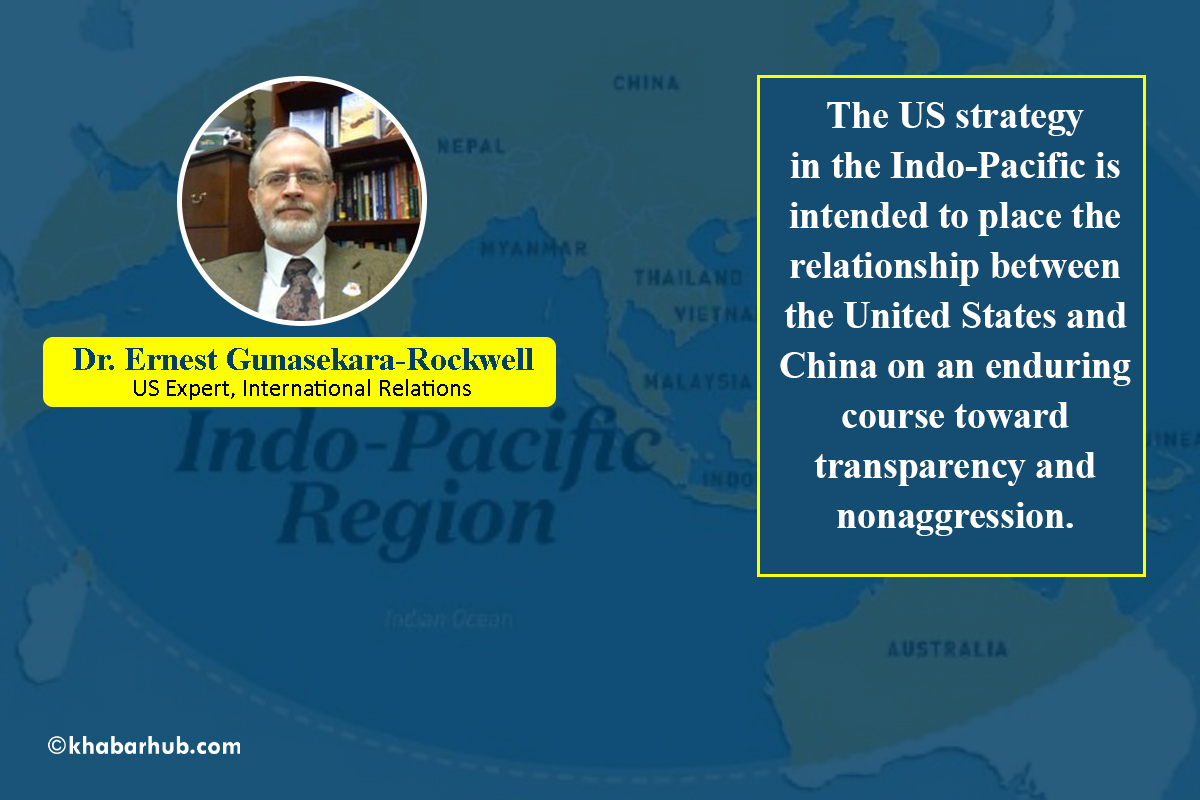
Building on America’s close relationships with its allies and partners in the region—including Australia, Japan, South Korea, India, and many others—Washington seeks opportunities to leverage the Blue Dot Network, Five Eyes, the Quad, and other initiatives to foster greater cooperation toward the achieving the goals and promoting the shared values and principles enshrined in America’s Indo-Pacific strategy.
This includes preserving peace through strength by transforming the US military so that it remains preeminent, relying on US allies and partners to shoulder a fair share of the burden of responsibility to protect against common threats, and advancing US influence by leading in multilateral organizations that promote the shared values and principles outlined above.
How do you assess the practical mechanism of IPS? Do they lack clear-cut strategy, resourcing, agendas, objectives, and leadership?
The essential verdict of the National Defense Strategy is that America’s military advantage over China and Russia is declining, and if left unaddressed, that erosion will undermine Washington’s capacity to counter aggression and intimidation in the Indo-Pacific.
The US government pursues cooperation with allies and partners in the region to address mutual challenges.
In terms of clear-cut strategy and resourcing, the US has committed to investing in advanced training facilities at the Joint Pacific Alaska Range Complex to provide the US and allied forces with a more realistic and representative training environment; invested in unit and depot maintenance across Air Force and Naval Aviation to enhance fighter readiness, and invested in advanced missile defense systems interoperable with allied systems in the region.
Additionally, the Department of Defense has accelerated the development and forward presence of US land forces’ Multi-Domain Task Force, utilizing Security Force Assistance Brigades to build partner capacity and strengthen multinational teams, and expanding Pacific Pathways to deepen relationships with US allies and partners.
Furthermore, the department has pursued strategic deterrence enhancements associated with investments in the new Columbia-class ballistic missile submarine, purchased 4th- and 5th-generation aircraft that will result in both capability and capacity improvements; invested in a variety of enhanced missile and missile defense systems, and, in establishing the new US Space Force, centralized efforts to unify, focus, and accelerate the development of space doctrine, capabilities, and expertise to outpace future threats, institutionalize advocacy of space priorities, and further build a space war-fighting culture.
In the region, US Indo-Pacific Command (USINDOPACOM) currently has more than 2,000 aircraft; 200 ships and submarines; and more than 370,000 Soldiers, Sailors, Marines, Airmen, DOD civilians, and contractors assigned within its area of responsibility.
All of this has been accomplished in conjunction with America’s allies and partners in the Indo-Pacific and helps demonstrate the level of commitment Washington has exhibiting and operationalizing clear-cut strategy, resourcing, agendas, objectives, and leadership.
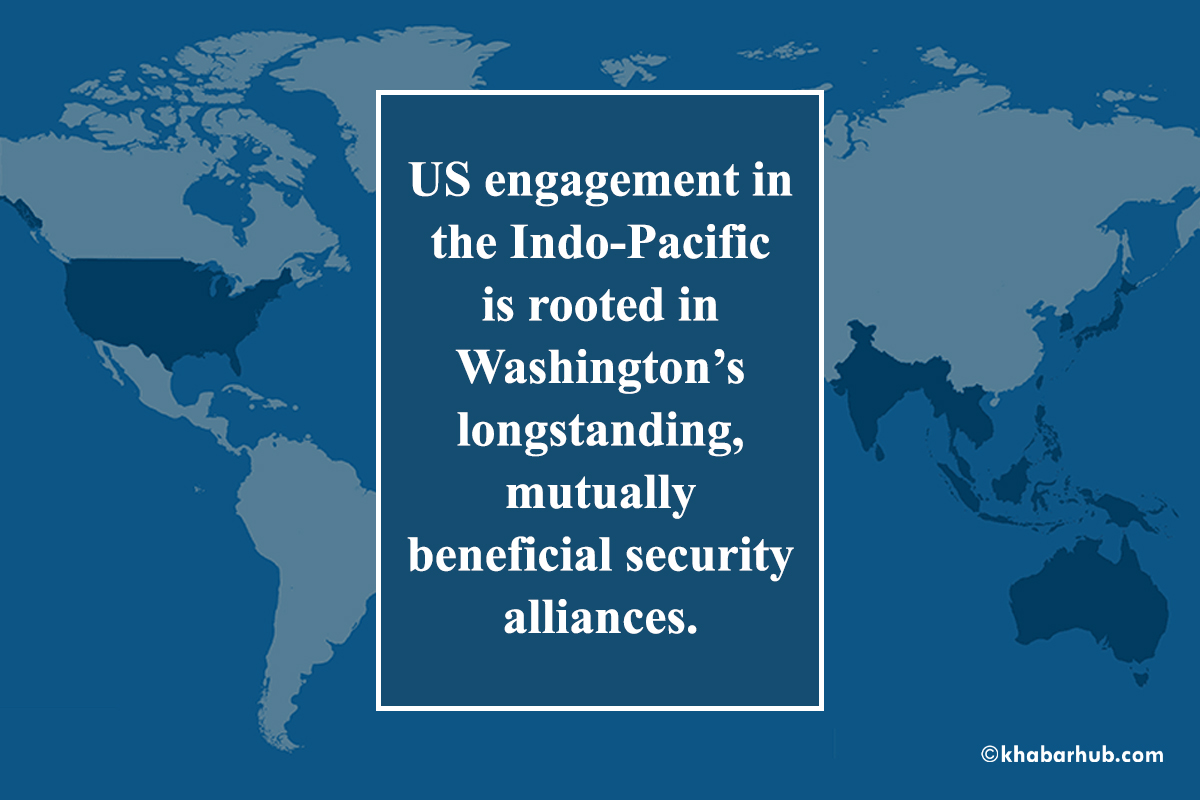
US engagement in the Indo-Pacific is rooted in Washington’s longstanding, mutually beneficial security alliances. Expanding US interoperability with allies and partners will guarantee that their respective defense enterprises can work together effectually during the routine competition, emergency, and conflict.
Thus, America has enhanced its alliances with Japan, South Korea, Australia, the Philippines, and Thailand. Additionally, the US government has pursued the means to expand relationships with Taiwan, New Zealand, Singapore, and other regional partners.
Within South Asia, where most of your readers are, Washington is working to operationalize America’s Major Defense Partnership with India, while developing evolving partnerships with Sri Lanka, Maldives, Bangladesh, and Nepal.
Obviously, the relationship with India, the regional powerhouse, offers the most promise in Washington’s eyes.
Through New Delhi’s Act East policy, Prime Minister Narendra Modi’s government continues to make significant security, economic, and development investments to secure the vision of a free and open Indo-Pacific region.
US President Donald Trump’s February 2020 trip to India underscores the importance of this developing relationship. Recent events surrounding the COVID-19 crisis and the worsening US-China relationship provide another opportunity for cooperation between the world’s two largest democracies.
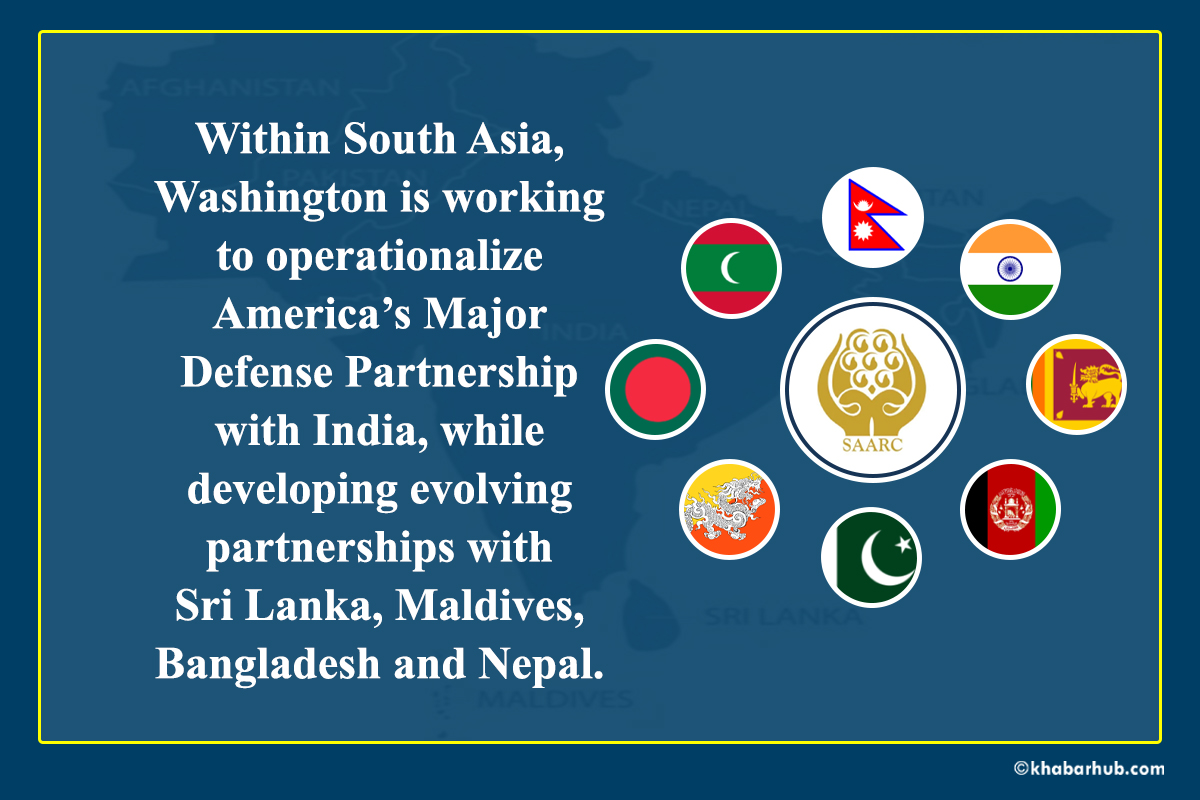
American businesses being encouraged to relocate their overseas operations out of China could well turn their attention to the rapidly developing and lucrative Indian market.
New Delhi’s firm stance against China’s BRI, assistance in Afghanistan, designation as America’s only major Defense Partner, inclusion in the Quad, and other collaborative efforts might lead to even closer military and economic ties.
The US relationship with Sri Lanka is a bit more complicated. Although the two nations have enjoyed relatively warm relations, as exemplified by the Cooperation Afloat Readiness and Training (CARAT) Exercise, Sri Lankan media is overwhelmingly anti-American and pro-Beijing.
In the 1980s, Washington and Colombo had discussed the possibility of relocating American forces from Subic Bay and Clark Air Force Base in the Philippines to the Sri Lankan port of Trincomalee.
However, the eruption of the Sri Lankan Civil War washed away any hope of that happening.
Today, with the future of America’s lease of Diego Garcia very much in question due to the International Court of Justice’s ruling that the Chagos Islands belongs to Mauritius, one could assume that the United States might again be in the market to relocate its considerable forces from the disputed island.
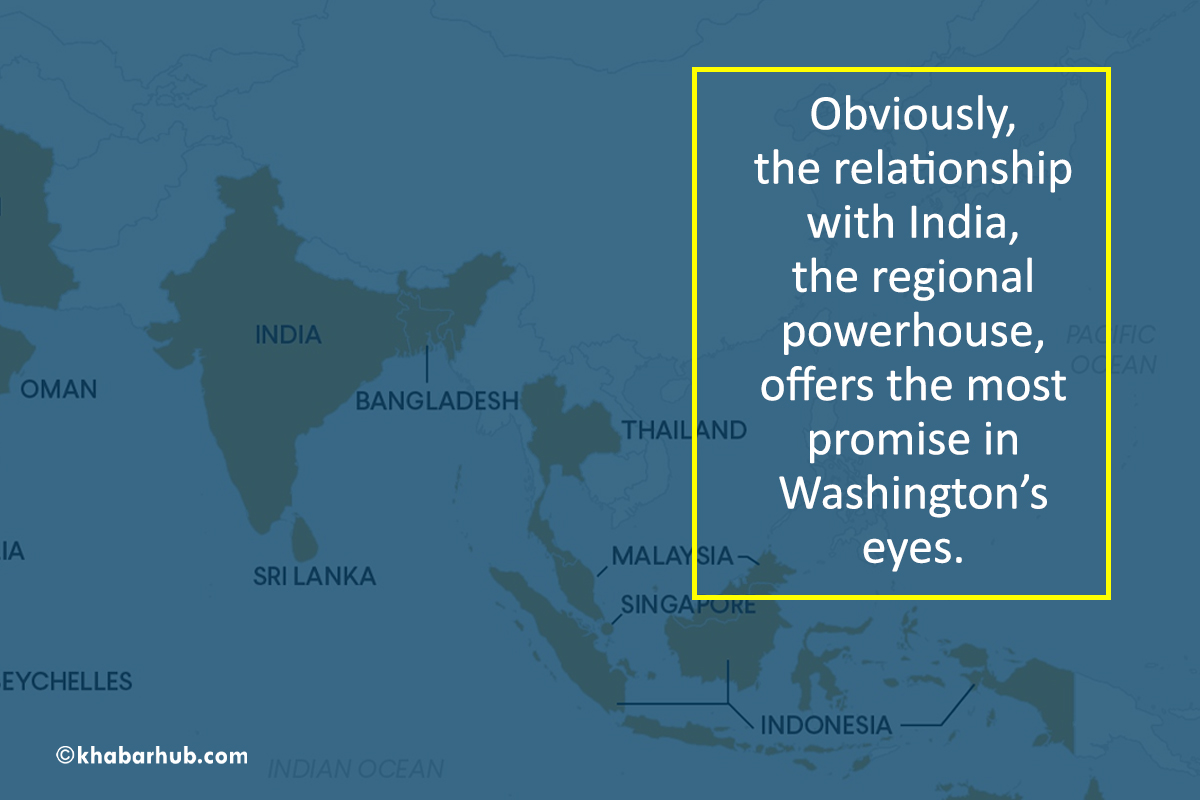
With Sri Lanka recently celebrating the eleventh anniversary of the end of its civil war, Trincomalee would again present an attractive location. However, democratic backsliding, ethnoreligious tensions, Islamic terrorism, and the aforementioned media hostility would seem to preclude such an arrangement.
Sri Lankan president Gotabaya Rajapaksa has, thus far, attempted to steer a middle path between Beijing and Washington, adhering—at least rhetorically—to the island nation’s long-standing tradition of non-alignment.
However, Colombo fell firmly into China’s debt trap with the poorly negotiated Hambantota project, and now the specter of a second similar blunder lies on the horizon: the multi-billion dollar Port City project, which is likewise funded by Chinese loans, offering the very real possibility of Sri Lanka losing sovereignty over its capital city should it fall arrears in payment.
Only through eschewing such ventures and instead of joining in the free, fair, and reciprocal alternatives offered by the United States and its regional partners can Sri Lanka hope to extract itself from Beijing’s snare.
In Nepal, the United States seeks to expand its defense relationship, focusing on humanitarian assistance and disaster relief.
These are skills vitally important to a nation that has witnessed significant natural disasters in recent years. Additionally, the Department of Defense seeks to collaborate with is Nepalese counterparts in matters of peacekeeping operations, defense professionalization, ground force capacity, and counterterrorism.
Washington’s growing defense partnership with Kathmandu is illustrated by the establishment of the US Army Pacific-led Land Forces Talks in June 2018, which is America’s senior-most military dialogue with Nepal.
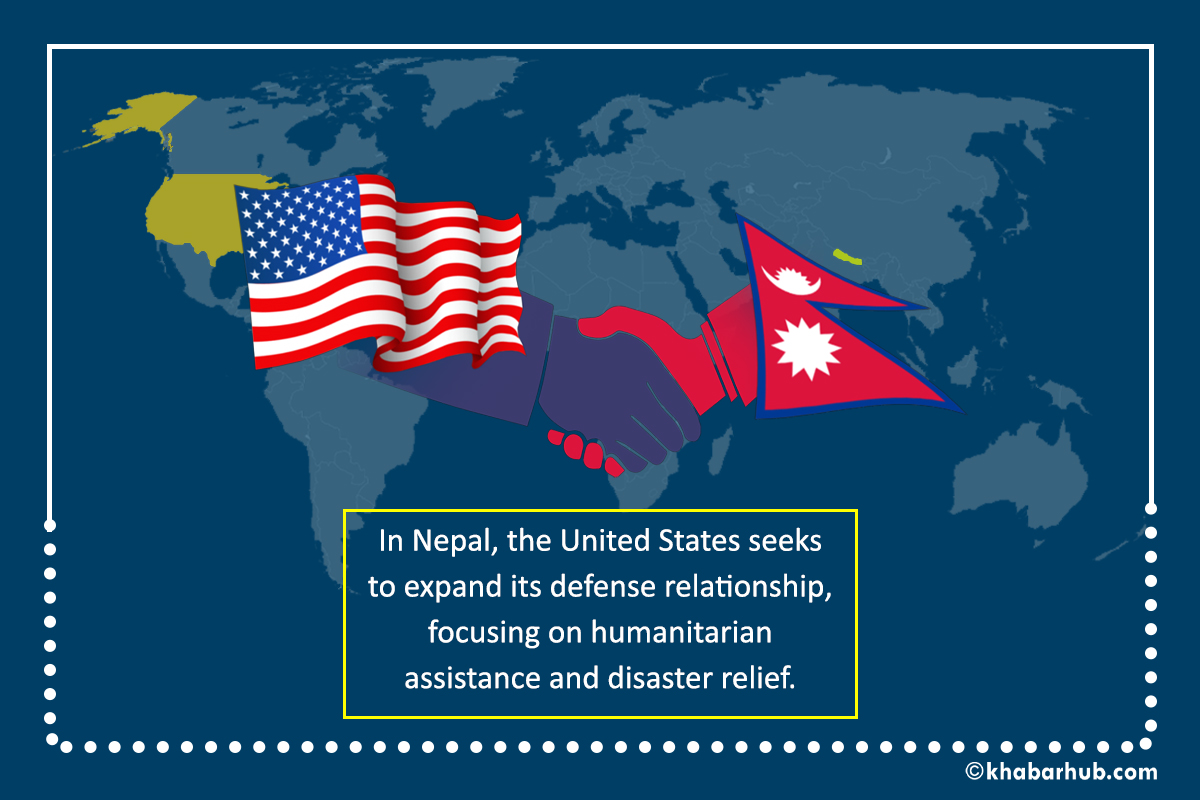
Additionally, the United States is committed to fostering emerging security relationships with partners in Southeast Asia, including Vietnam, Indonesia, and Malaysia.
Such efforts have become increasingly visible in the form of US assistance toward staving off Chinese maritime aggression against these nations, especially in the immediate aftermath of the onset of the COVID-19 crisis.
Finally, efforts to preserve a free and open Indo-Pacific have likewise brought the United States closer to key Western allies, including the United Kingdom, France, and Canada—each with their own Pacific identities.
How can like-minded democracies unite to confront regional challenges and navigation of freedom after COVID-19?
In the aftermath of COVID-19, especially given China’s obvious role in spreading the virus through gross incompetence, malicious disinformation, and barefaced opportunism, it is more essential than ever that like-minded democracies unite to confront regional challenges.
The cases of South Korea’s and Taiwan’s approaches to dealing with the virus are exemplars of how democratic, transparent, open societies are better than authoritarian regimes at addressing such emergencies.
Seoul’s and Taipei’s willingness to share their lessons learned subject matter expertise, and resources with others in the region and beyond is also indicative of how the shared values and principles enshrined in the US Indo-Pacific strategy are of mutual benefit to all.
The United States and its allies and partners in the region should continue to move toward a common strategic approach to the Indo-Pacific, utilizing and enhancing existing multilateral organizations (the Quad, ASEAN, SAARC, etc.) and bilateral relationships and building new initiatives (such as the Blue Dot Network) to promote and foster the shared values and principles of respect for sovereignty and independence of all nations; peaceful resolution of disputes; free, fair, and reciprocal trade based on open investment, transparent agreements, and connectivity; and adherence to international rules and norms, including those of freedom of navigation and overflight.
Could you elaborate more on the United States’ relationship in this region?
Recognizing Washington’s failure to adequately support its World War II ally, the Kuomintang government of China, US leaders have, since the end of the Chinese Civil War, assisted Taiwan to create a vibrant and open democracy.
Still, in the 1970s, the Nixon administration abandoned its support for the Taipei regime as the legitimate government of China.
Instead, President Richard Nixon recognized the Chinese Communist Party’s government in Beijing, hoping to bring China into the fold of law-abiding and peace-loving nations, much in the same manner President Ronald Reagan would later approach the Soviet Union.
This was easily one of Nixon’s biggest miscalculations on the international scene and has, to date, met with a much different result than Reagan’s later overtures to Moscow did.
Despite this seeming betrayal, the United States continues to ensure Taiwan’s (undeclared) independence and provide significant economic and military aid to Taipei.
Likewise, Washington invested in the economies of other democratic countries throughout the Indo-Pacific region from the 1970s to today and has played significant roles in the emergence and support of regional institutions such as the Association for Southeast Asian Nations (ASEAN), the Asia-Pacific Economic Cooperation (APEC) forum, and similar organizations.
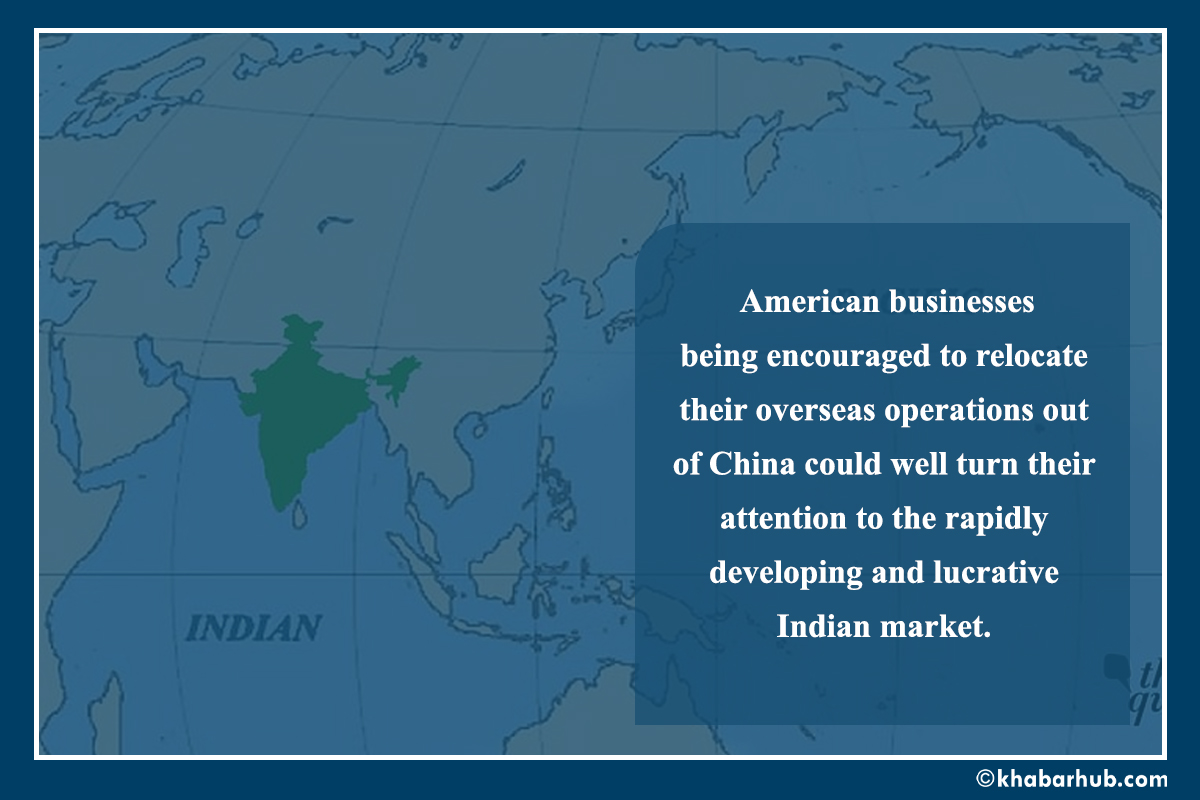
Throughout much of the 1990s and 2000s, Washington’s interests were largely redirected to the Middle East.
Terrorist attacks emanating in the region and multiple multination wars aimed at redressing the underlying causes and eliminating the institutions responsible for those attacks took precedence.
And, all the while, Beijing spent the time to build up its military, modernize its economy, and insert itself into the economies, disputes, and organizations of the Indo-Pacific—taking advantage of Washington’s diversions.
When the US administrations of the 2010s finally awoke to the new threat in the region, America found itself with a new near-peer rival in Beijing.
President Barrack Obama’s “Pivot to Asia,” sought to reinsert America more firmly into the Indo-Pacific equation, but his administration’s inability to wrap up preexisting conflicts in the Middle East and insertion of American troops into new operations in Syria and Libya largely sidelined the highly vaunted pivot.
It was left to the administration of President Donald Trump to make the turn toward the Indo-Pacific a reality, and his 2017 speech to the APEC Summit in Vietnam championed many of the commitments that would later be enshrined in the administration’s Indo-Pacific Strategy: the US commitment to safety, security, prosperity, and a free and open Indo-Pacific that mutually benefits everyone.


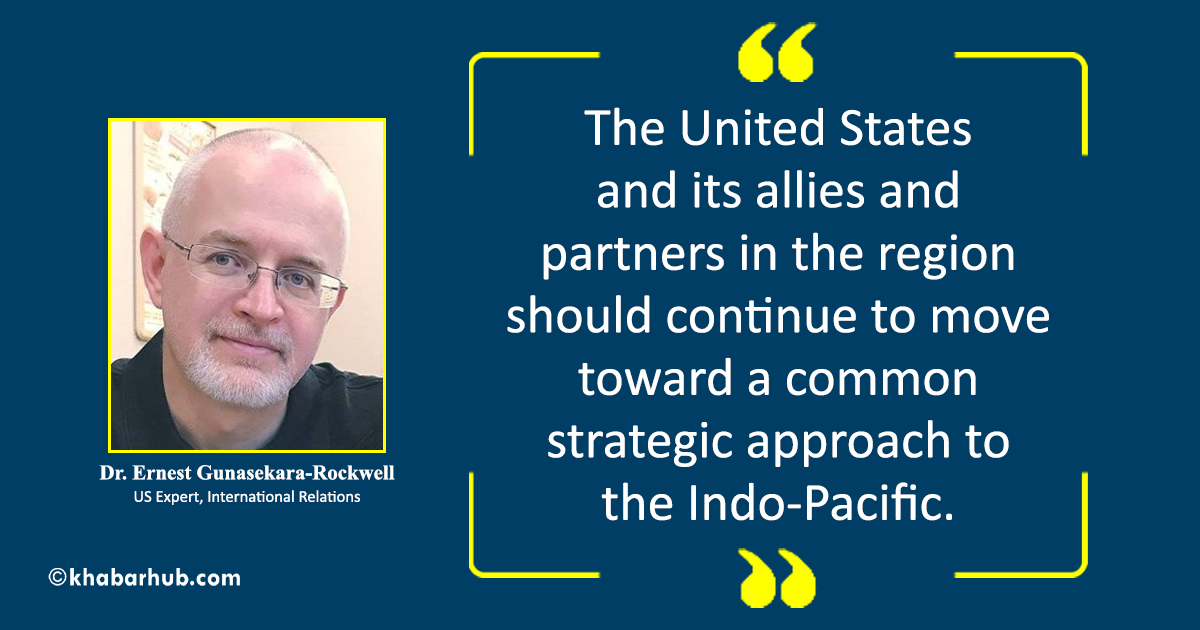






Comment